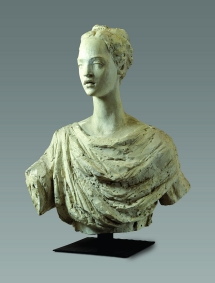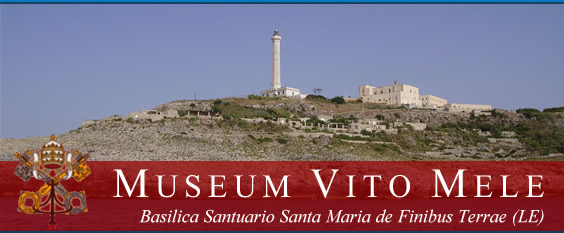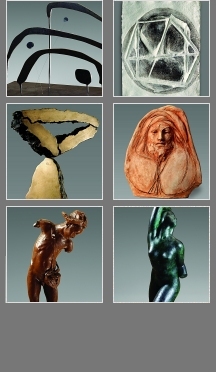|
|
| |
|
|
| |
Artisti / Artists : Museum Vito
Mele |
|
|
| |
 |
Giorgio Galletti |
|
|
|
Nasce a Desio nel 1934; il padre è capo
marmista del Duomo di Milano, così sin
da giovane si avvicina all'arte.
Dal 1948, infatti, incomincia ad apprendere i
primi rudimenti che costituiranno la base di un
mestiere che non avrebbe mai più abbandonato.
I suoi primi lavori, eseguiti nella bottega del
padre, sono notati dallo scultore Malerba, che
capisce immediatamente le
doti del ragazzo e suggerisce al padre - che sarà
favorevole - di iscrivere Giorgio all'Accademia
di Brera. La passione per l'arte coinvolge totalmente
il ragazzo. In questi anni conosce Marchini, Soli
e Paiella; a Monza frequenta Manfrini. Approfondisce
la tecnica del bronzo lavorando come ritoccatore
di cere presso importanti fonderie artistiche.
In una di queste, la Fonderia Battaglia (tra le
più importanti), carpisce i segreti delle
diverse "mani" di artisti importanti.
Nel 1955 conosce lo scultore Francesco Messina,
diventandone collaboratore e amico. Agli inizi
degli anni Sessanta, ormai noto e stimato nell'ambiente
artistico, decide di continuare in proprio l'attività
di scultore. Delle sue più significative
opere ricordiamo il monumento ai Caduti a Cunardo
(Varese), quello alpino a Tredate (Varese), il
monumento a Giovanni Paolo II nel santuario della
Madonna di Czestochowa in Dozio, il monumento
ai Caduti di Castiglione Olona (Varese), i portali
delle chiese di Sant'Eusebio a Sesona di Vergiate
(Varese), di San Giovanni Evangelista ad Albiate
(Milano), di Nasca sul Lago Maggiore, di Cesate
(Milano), di Garbagnate (Milano), il gruppo in
marmo della facciata della chiesa di Muggiò.
Tra le singole opere in bronzo, pregevoli sono:
Luna, Dondolo, Regina, Riconciliazione, Vele della
Chiesa, Seminatore, Serena, e varie Maternità.
Attualmente vive e lavora a Muggiò (Milano).
|

L’ANGELO
DELLA RESURREZIONE, 1991
gesso, h. cm. 90
|
|
|
|
| |
|
|
| |
|
 |
Giorgio Galletti |
|
|
Giorgio Galletti was born in Desio in 1934.
His father was head marble carver at the Milan
Duomo. As early as 1948 Galletti began to learn
the rudiments of a craft he would never abandon.
His first works, realised in his father’s
workshop, were noticed by the sculptor Malerba
who
immediately recognised his talent and suggested
to the father that he should enrol his son at
the Brera Accademia. The youth was totally absorbed
by his passion for art and at this time knew Marchini,
Soli and Paiella, and at Monza visited Manfrini.
He improved his technique with bronze by working
as a wax retoucher in specialist art foundries.
In one of these, the Fonderia Battaglia, he began
to understand the secrets of the different touches
of important artists. In 1955 he met the sculptor
Francesco Messina and they became collaborators
and friends. At the beginning of the ‘60s,
already recognized and held in esteem in the art
world, he decided to become a sculptor in his
own right. Among his most significant works were
the war memorial at Cunardo, and another at Tredate.
He also made the statue of Pope John Paul II in
the sanctuary of the Madonna of Czestochowa in
Dozio, the war memorial at Castiglione Olona,
the portals of churches at Sesona di Vergiate
and Albiate, and the group in marble on the facade
of the church at Muggiò. His works in bronze
include Luna, Dondolo, Regina, Riconciliazione,
Vele della Chiesa, Seminatore, Serena, and various
Maternità. He lives and works in Muggiò.
.
|
|
|
|
|
|
 |





